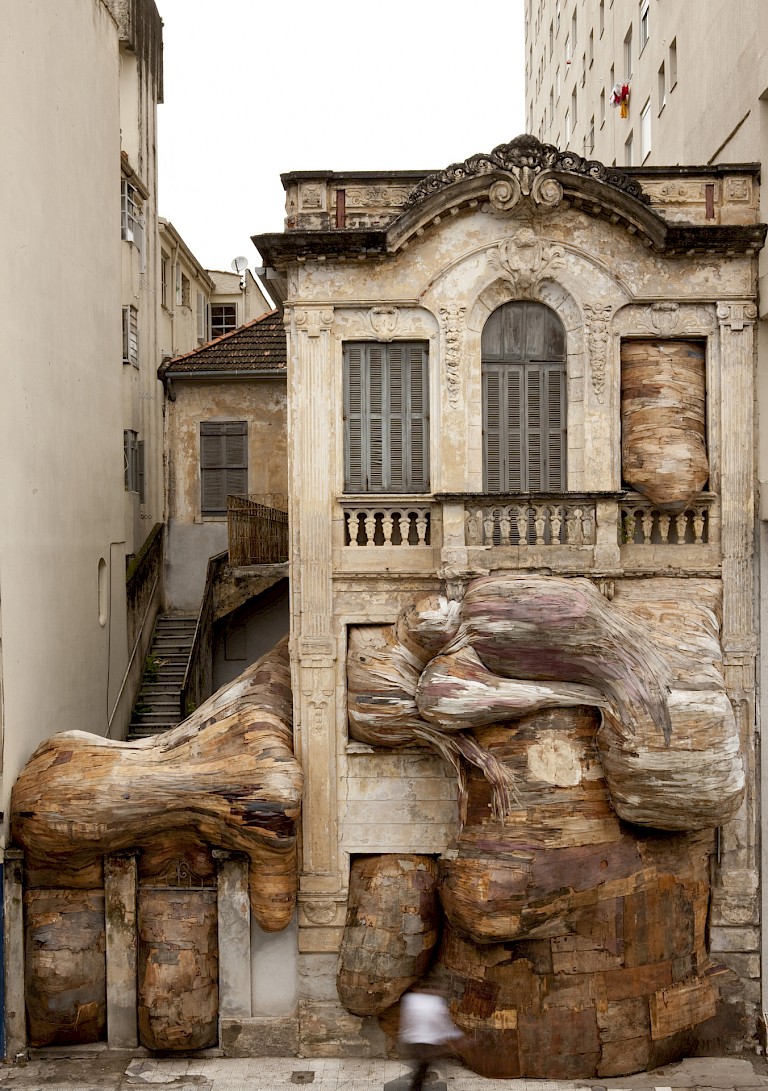



The process of construction is an important aspect of this larger conversation, according to Oliviera. The artist gathers scraps of plywood fencing from dumpsters and other trash sites. The layers of plywood are peeled apart and then re-glued into his distinctive organic forms. Oliviera describes this as a process of “returning the material to its original place—the street.” Instead of the “aseptic environment of galleries and museums,” he says, “in this project, the materials had a harmonic integration with the building’s aged walls,” which supported the illusion that the sculpture “grew from its interior.
An added layer of meaning came from the fact that this abandoned property had been boarded up with the very same materials—the ubiquitous plywood fencing—that Oliviera repurposed in the sculpture. “This work was then made of the same kind of material that was already there. It was the same fence, but with its ‘flesh’ modified,” he says.
The impact of the piece far exceeded Oliviera’s expectations. “The work was never conceived as an interactive public project,” he says. “It was never directed for this or that local community, never pretended to help people, nor to teach anyone, nor to be beautiful nor ugly—but just to be a presence.” In spite of these lack of pretensions, the piece became a magnet for a larger discussion about public art and the Bienal. This conversation reached its peak when a prominent, conservative philosopher focused his ire on “the monster house” as an example of bad public art left in the wake of the Bienal.
This public debate helped raise critical issues, not only about public art, but also about blight, urban renewal, and aesthetics generally, the artist says. The form of his sculpture was based on medical images of human tumors. The piece drew a parallel between “the human body disorders and social disorders common in the big cities of Brazil,” says the artist. “The work gave vision to the way Brazilian society has treated the problem of poverty and marginalized populations. Taking the term ‘social tissue’ to its literal significance, the layers of aged and rotten wood, commonly seen in the construction of shanty towns, play in this work the role of degenerated organs and diseased skin.”
By making explicit these “degenerated organs,” Oliviera contributed to an important discussion about the fairness and aesthetics of our increasingly urbanized world.
All copyright belongs to Shanghai Academy of Fine Arts, Shanghai University.



